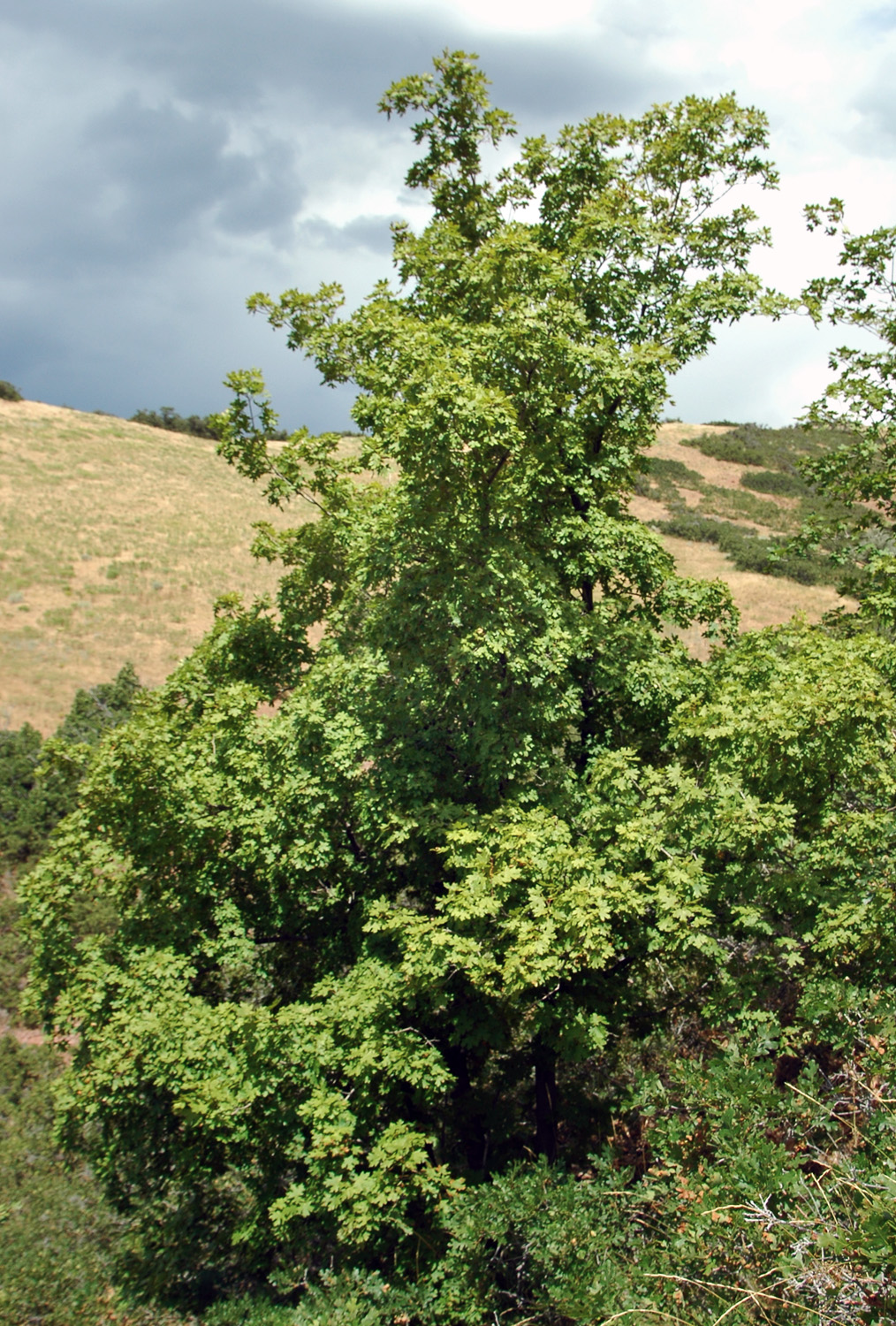- Acer grandidentatum
taxobox
name = "Acer grandidentatum"
image_caption = Bigtooth Maple,Wasatch Mountains , Utah
regnum =Plantae
unranked_divisio =Angiosperms
unranked_classis =Eudicots
unranked_ordo =Rosids
ordo =Sapindales
familia =Sapindaceae
genus = "Acer"
species = "A. grandidentatum"
binomial = "Acer grandidentatum"
binomial_authority = Nutt.|"Acer grandidentatum" (Bigtooth Maple) is a species of
maple native to interior westernNorth America , occurring in scattered populations from westernMontana in theUnited States south toCoahuila in northernMexico . It is closely related to "Acer saccharum " (Sugar Maple), and is treated as asubspecies of it by some botanists, as "Acer saccharum" subsp. "grandidentatum" (Nutt.) Desmarais. [USDA Plants Profile: [http://plants.usda.gov/java/profile?symbol=ACGR3 "Acer grandidentatum"] ] Germplasm Resources Information Network: [http://www.ars-grin.gov/cgi-bin/npgs/html/taxon.pl?1137 "Acer saccharum" subsp. "grandidentatum"] ]It is a small to medium-sized
deciduous tree growing to 10–15 m tall and a trunk of 20–35 cm diameter. Thebark is dark brown to gray, with narrow fissures and flat ridges creating plate-like scales; it is thin and easily damaged. The leaves are opposite, simple, 6–12 cm long and broad, with three to five deep, bluntly-pointed lobes, three of the lobes large and two small ones (not always present) at the leaf base; the three major lobes each have 3–5 small subsidiary lobules. The leaves turn golden yellow to red in fall (this trait is less reliable in warmer areas).The
flower s appear with the leaves in mid spring; they are produced incorymb s of 5–15 together, each flower yellow-green, about 4–5 mm diameter, with no petals. Thefruit is a paired samara (two wingedseed s joined at the base), green to reddish-pink in color, maturing brown in early fall; each seed is globose, 7–10 mm diameter, with a single wing 2–3 cm long.It commonly grows in
limestone soils but can adapt to a wide range of well-drained soils, from sand to clays to even white limestone areas. It prefers valleys, canyons, and the banks of mountain streams, primarily at higher elevations such as the sheltered canyons of theEdwards Plateau inTexas (where a population is protected in theLost Maples State Natural Area ). Althoughcontinental climate s prevail over all of its natural range, it grows well in themaritime climate of Vancouver. It is slow growing when young, and does not have many pests.It is occasionally planted as an ornamental tree, valued for its drought tolerance and ability to grow in rocky landscapes.
Other vernacular names occasionally used include Lost Maple, Sabinal Maple, Western Sugar Maple, Uvalde Big Tooth Maple, Canyon Maple, Southwestern Big Tooth Maple, Plateau Big Tooth Maple, Limerock Maple, Wasatch Maple and Rocky Mountain Sugar Maple.
References
Wikimedia Foundation. 2010.
